Ginzan Onsen Complete Guide: Hot Springs, Hotels, How to Get There

Yamagata's Ginzan Onsen is one of the most charming hot spring towns in Japan with a nostalgic early 20th-century atmosphere. This guide explains how to get to Ginzan Onsen and offers lodging and activity recommendations.
Ginzan Onsen - A Historic Hot Spring Town in Yamagata
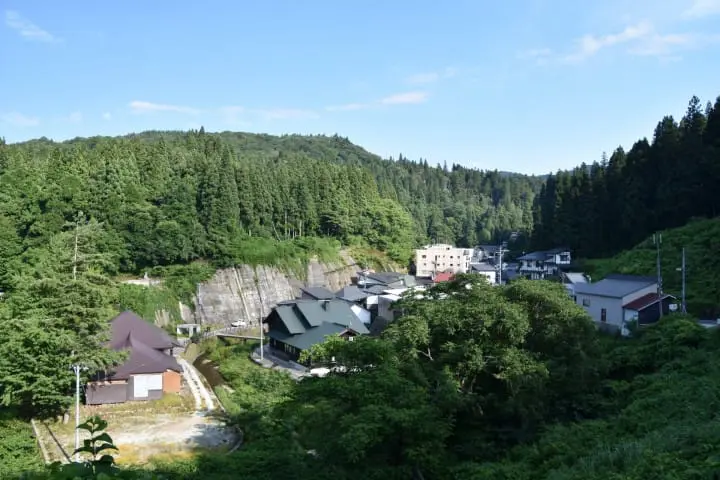
Ginzan Onsen is in Obanazawa, Yamagata Prefecture, which is located in the Tohoku Region. The hot spring town is right by the prefectural border with Iwate. It is said to have received its name from a giant silver mine ("ginzan" in Japanese) called Nobezawa Ginzan which prospered in the past.
The current hot spring town was established after a large flood at the beginning of the 20th century. Wooden ryokans line both sides of the river, and the area has maintained its townscape as it was when these ryokans were built. Here at Ginzan Onsen you will be able to feel the history of the region.
Continue reading to learn about how to make a trip to Ginzan Onsen the best it can be.
How to Get to Ginzan Onsen From Tokyo and Osaka
From Tokyo to Ginzan Onsen
Getting to Ginzan Onsen is easiest through taking the train to Oishida Station in Yamagata Prefecture.
From Tokyo Station, you will get on the JR Yamagata Shinkansen for Shinjo and alight at Oishida Station. The ride is about three hours and 15 minutes, and a non-reserved seat costs 12,330 yen.
From JR Oishida Station, a bus called the Ginzan Hanagasa-go will take you to the hot spring town in about 40 minutes for a fare of 710 yen. Shuttle bus service may be available depending on the ryokan you are staying at. If you already know where you will be staying, you may want to ask them for information.
From Osaka to Ginzan Onsen
JAL flies three trips a day from Osaka's Itami Airport to Yamagata Airport. The flight lasts one hour and 15 minutes, and the normal fare is 35,800 yen.
From Yamagata Airport, there are three direct buses to Ginzan Onsen departing three times a day. The bus ride takes one hour and 10 minutes for a fare of 1,500 yen. However, be careful as the last bus stops at Obanazawa City Hall.
Effects and Characteristics of the Hot Springs at Ginzan Onsen

Picture courtesy of Ginzan Onsen Tourist Information Center
Ginzan Onsen has a sulfate spring quality, and the clear water has a slightly salty taste. It is said to have good effects for cuts, burns, chronic skin diseases, and arteriosclerosis.
Recommended Hot Spring Spots at Ginzan Onsen
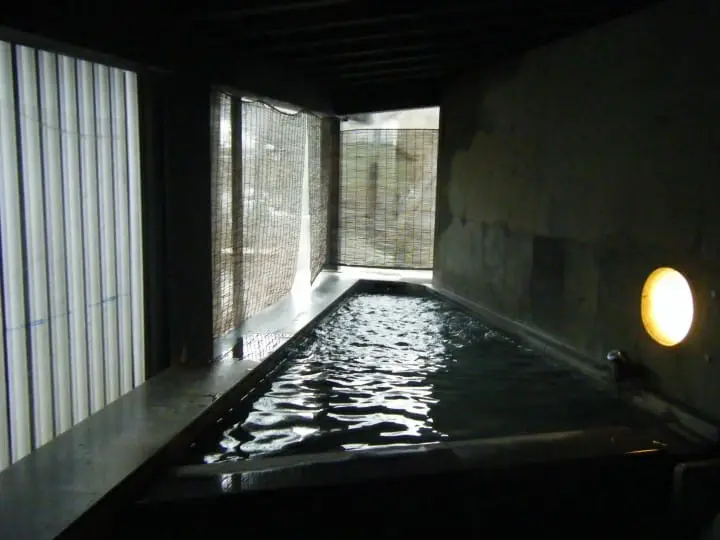
Picture courtesy of Ginzan Onsen Tourist Information Center
Public Bath Shirogane-yu
There are three public baths at Ginzan Onsen, but we recommend the uniquely-designed Shirogane-yu. There are triangle-shaped baths on the first and second floors. From the bath on the second floor, you can gaze out the window and admire the view while you relax.
Address: Yamagata, Obanazawa, Ginzanshinhata 433
Price: Adult 500 yen, Child 200 yen
Website: http://www.city.obanazawa.yamagata.jp/51.html
Takimikan
A ryokan managed by soba restaurant Takimikan, which serves handmade soba made from Obanazawa buckwheat. The ryokan offers bathing in their hot spring along with a lunch meal. The open-air bath boasts an amazing view of the area.
Address: Yamagata, Obanazawa, Ginzanshinhata 522
Price: Soba Teishoku 2000 yen, Soba Zen 3500 yen, Takimi Miraku 3500 yen *includes consumption tax and bath tax
Warashiyu
A popular foot bath spot at the entrance of the hot spring town. Hot water from the source is used directly. Visitors can enjoy a view of the Ginzan River while relaxing.
Address: Yamagata, Obanazawa, Ginzanshinhata
Price: Free
Website: http://www.city.obanazawa.yamagata.jp/51.html
Recommended Lodgings at Ginzan Onsen
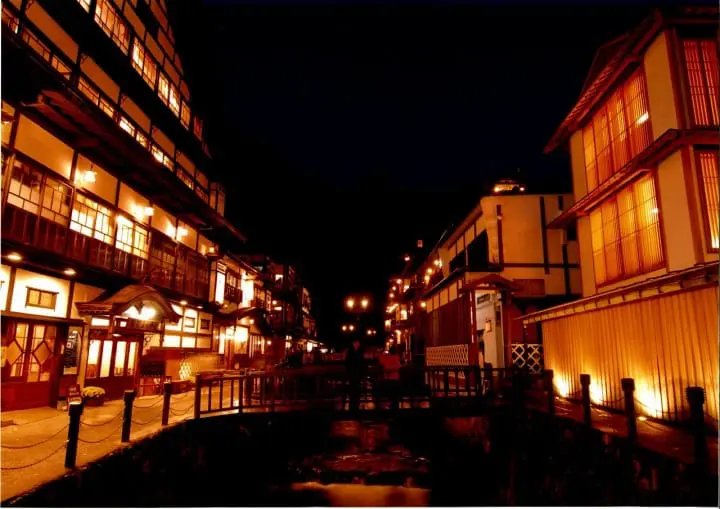
Picture courtesy of Ginzan Onsen Tourist Information Center
Senkyo no Yado Ginzanso
Some guest rooms at this ryokan boast outdoor baths. In addition to an inside bath and open-air bath, they also have a popular shallow bathtub called "neyu" where you can lie down and relax.
Address: Yamagata, Obanazawa, Ginzanshinhata 85
Website: http://www.ginzanso.jp/lang/english.php#!page1
Notoya Ryokan
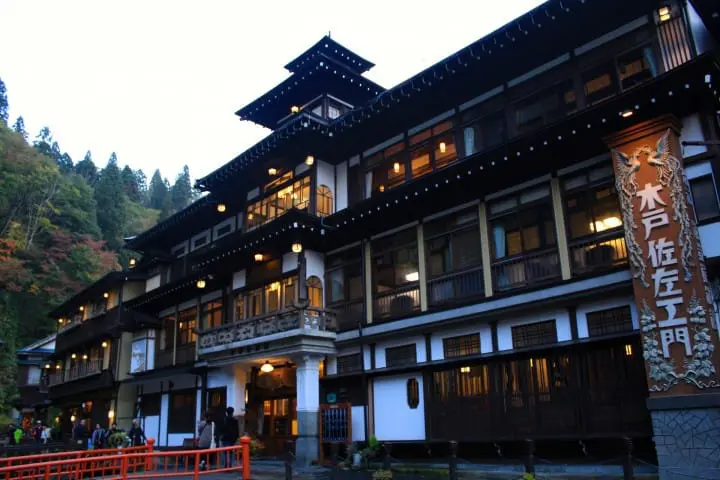
Notoya Ryokan is a magnificent work of wooden architecture, complete with a profound and warm interior. The outside looks almost as if time stopped moving long ago. The facility boasts an outside bath, an open-air bath with a view of the Hakugin-no-Taki waterfall, as well as a Doukutsu (cave) bath that can be used as a private bath.
Address: Yamagata, Obanazawa, Ginzanshinhata 446
Website: http://www.notoyaryokan.com/ (Japanese)
Fujiya
Fujiya is the most modern-style ryokan at Ginzan Onsen. There are five different types of baths, from the Hiba (*1) baths and the underground baths, to the rock baths, bamboo baths, and semi-open-air baths. All baths are private, so you will be able to relax with the whole bath to yourself.
*1 Hiba: the leaves of a Hinoki (Japanese cypress).
Address: Yamagata, Obanazawa, Ginzanshinhata 443
Website: http://www.fujiya-ginzan.com/english/
What to Do at Ginzan Onsen
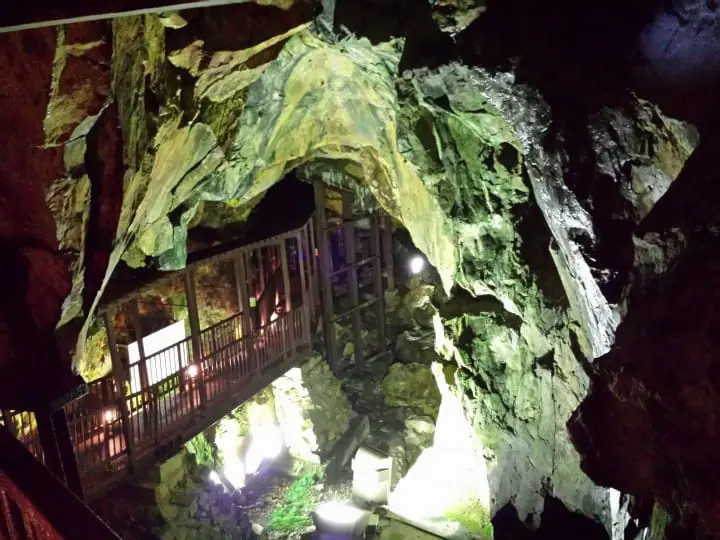
Picture courtesy of Ginzan Onsen Tourist Information Center
Ginzan Onsen offers attractions such as the Shirogane-no-Taki waterfall and Senshinkyo Valley, as well as a walking trail around some silver mine caves. After you've relaxed in the onsen, we recommend you take a walk to take in all the nature. *Entrance to the mountain area is unavailable from the first snow until May 4 when the area is opened.
Also, on every Saturday from May to October, visitors can enjoy watching Yamagata Hanagasa Odori - a public dance performance on the bridge in the center of the town.
Traffic Restrictions for Day-Trip Visitors from December 2024
Ginzan Onsen is a popular tourist destination for many travelers visiting the Tohoku region of Japan, especially due to its beautiful winter snow scenery.
However, this has led to issues related to over-tourism. As a result, the Ginzan Onsen Association plans to implement traffic restrictions and admission limits during the winter season from December 2024 to the end of March 2025. Detailed information is expected to be announced in early October 2024, but the current official information is as follows:
Traffic Restriction Area: Prefectural Road No. 188 from Jubuichi Checkpoint to Ginzan Onsen.
Traffic Restriction Hours: Daily from 16:00 to 10:00 the following morning. Day-trip tourists will not be allowed to pass during these hours.
Target of Traffic Restrictions: Day-trip tourists, excluding overnight guests and registered transport operators.
Admittance Restrictions: Day-trip tourists.
Admission Limit: 100 people per hour.
Ticket System: Expected to be confirmed in early October. Online ticket sales in collaboration with travel agencies are planned.
FAQ
Which is the most beautiful winter onsen in Japan?
Japan is home to numerous stunning winter onsen (hot spring) destinations known for their scenic beauty and relaxing thermal baths. One particularly beautiful winter onsen location in Japan is Ginzan Onsen in Yamagata Prefecture. Ginzan Onsen is renowned for its charming atmosphere, characterized by historic ryokans (traditional inns) lining a picturesque river with snow-covered bridges and lantern-lit walkways, creating a magical winter wonderland scene. The ambiance of Ginzan Onsen is especially enchanting during the snowy winter months, offering a serene and picturesque setting for visitors to unwind in the soothing hot springs while immersed in the scenic beauty of the snow-blanketed landscape.
Is Ginzan-onsen worth it?
Ginzan Onsen is considered a worthwhile destination for those seeking a serene and nostalgic retreat in a traditional Japanese hot spring town. The charming atmosphere of Ginzan Onsen, with its historic ryokans illuminated by lantern light along the river, offers a tranquil and magical setting that evokes a sense of timelessness. Guests can immerse themselves in an authentic ryokan experience, complete with tatami rooms, kaiseki dining, and relaxing hot spring baths, providing a peaceful escape and a taste of Japanese hospitality. The scenic beauty of Ginzan Onsen, especially during the winter when the town is covered in snow, adds to its allure, offering picturesque views for relaxation and enjoyment of the changing seasons. With its rejuvenating thermal waters, cultural significance, and historical charm dating back to the Taisho era, Ginzan Onsen provides a unique blend of nature, tradition, and wellness, making it a compelling destination for travelers seeking a retreat into Japan's past and a peaceful hot spring experience.
How far in advance should I book Ginzan-onsen?
To ensure a seamless and enjoyable visit to Ginzan Onsen, it is advisable to book accommodations well in advance, particularly during peak seasons such as winter for snowscapes or autumn for fall foliage. Booking 3 to 6 months ahead, especially for weekends and holidays, can help secure your preferred ryokan and guarantee availability at this popular destination. Flexibility in travel dates may offer more options, so considering weekdays or less busy periods can also aid in finding suitable accommodations. Planning ahead and making early reservations will enhance your experience in Ginzan Onsen, allowing you to fully appreciate the tranquil and nostalgic atmosphere of this picturesque hot spring town.
Why is Ginzan-onsen famous?
Ginzan Onsen is renowned for its picturesque beauty, historical charm, and traditional hot spring experience, making it a famous destination in Japan. The town's stunning scenery, especially in winter with snow-covered historic ryokans illuminated by lantern light along the river, creates a magical setting. Ginzan Onsen's well-preserved ryokans from the Taisho era offer an authentic Japanese onsen experience with tatami rooms, kaiseki dining, and soothing hot spring baths. Known for its relaxing thermal waters and tranquil atmosphere, Ginzan Onsen provides a serene retreat for visitors seeking wellness and rejuvenation. Its popularity as a filming location for movies and TV dramas adds to its allure, while its historical significance offers insights into Japan's traditional onsen culture and the bygone era of the Taisho period, solidifying Ginzan Onsen's reputation as a nostalgic and idyllic destination.
How long do you need at Ginzan Onsen?
The ideal duration for a visit to Ginzan Onsen varies based on your preferences, activities, and the level of relaxation you desire. Ginzan Onsen, located in Yamagata Prefecture, offers options for a day trip to enjoy the picturesque hot spring town's historic ryokans and charming streets. For a more immersive experience, an overnight stay allows you to fully unwind in the tranquil atmosphere, relax in the rejuvenating hot springs, indulge in a kaiseki meal, and absorb the nostalgic ambiance of the town. Consider extending your stay to two or more nights for a leisurely retreat, enabling you to explore the surrounding nature, dive deeper into the local culture, and partake in the various activities that Ginzan Onsen and the nearby areas have to offer. Whether for a brief escape, an overnight spa getaway, or an extended rejuvenating stay, Ginzan Onsen provides a serene retreat for relaxation and traditional Japanese hospitality.
Weather and What to Wear to Ginzan Onsen
It may be hot during the day in summer at Ginzan Onsen, but mornings and nights can get chilly, so you should bring a light coat with you. As the onsen town is located in the mountains, it will be cooler than Tokyo and Osaka.
The town is covered in snow from December to March, so be sure to bring warm clothes and protective garments, such as a down jacket or fleece.
Read also
*Information on transportation and fees are listed based on information from official websites. Main image from Pixta
This is the official account of MATCHA's editorial department. Our articles feature useful travel information for visitors to Japan, from how-to guides to recommended places to visit.











































![[2026] Top 5 Strawberry Picking Spots in Tokushima, Naruto| Farms and Access Guide for January to May](https://resources.matcha-jp.com/resize/720x2000/2025/03/06-227165.webp)
![[Yamanashi/ Hokuto City] 4 Hot New Spots Opening in 2026](https://resources.matcha-jp.com/resize/720x2000/2025/12/12-252747.webp)


